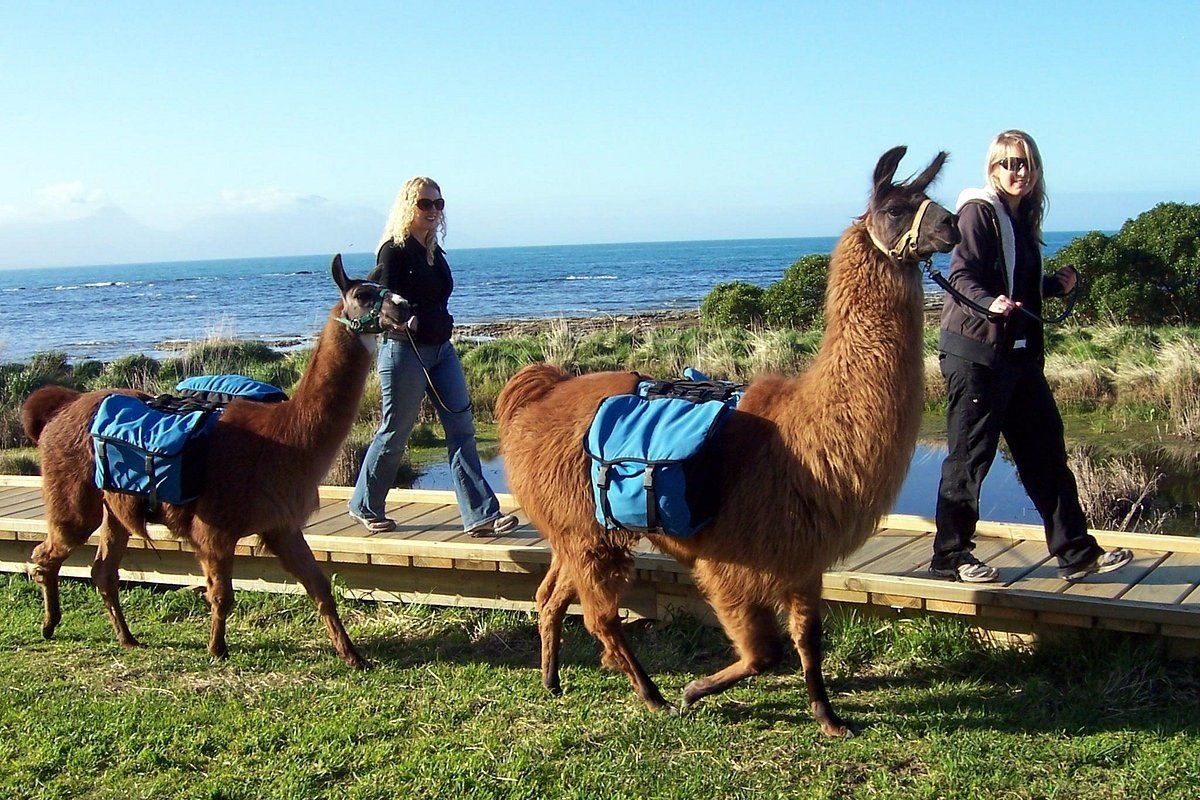
Llama trekking is a unique and exhilarating adventure that has gained popularity among outdoor enthusiasts and adventure seekers. Embarking on a llama trek allows you to explore some of the most stunning and remote landscapes while forming a special connection with these gentle creatures. But did you know that llama trekking offers more than just breathtaking views and a chance to disconnect from the daily grind?
In this article, we will uncover 17 surprising facts about llama trekking that will leave you amazed and eager to embark on your own llama adventure. From their incredible strength and endurance to their ability to navigate difficult terrains with ease, llamas have some remarkable traits that make them exceptional companions on the trails.
So, if you’re ready to be inspired and learn more about the fascinating world of llama trekking, read on to discover these surprising facts and get ready to plan your next outdoor escapade!
Key Takeaways:
- Llama trekking offers a sustainable and eco-friendly way to explore nature, while enjoying the company of gentle and sociable animals. It’s a unique adventure that promotes mindful travel and supports local communities.
- Embarking on a llama trekking journey allows you to bond with these surefooted and adorable creatures, while experiencing the great outdoors at a slower pace. It’s a family-friendly activity that creates lasting memories and fosters a love for nature.
Llamas have been used for centuries as pack animals.
Llamas have a long history of being domesticated and used as pack animals in South America. Their ability to carry heavy loads over rugged terrain makes them well-suited for trekking adventures.
Llamas are naturally adapted to high altitudes.
Due to their origins in the Andes Mountains, llamas are able to efficiently navigate high altitudes. This makes them ideal companions for trekking in mountainous regions.
Llamas are surefooted and agile.
With their slender bodies and padded feet, llamas are incredibly surefooted and agile. They can easily traverse steep and rocky terrain, providing a safe and stable trekking experience.
Llama trekking is a sustainable and eco-friendly alternative.
Unlike traditional trekking with horses or mules, llama trekking leaves a much smaller environmental footprint. Llamas have a low impact on the fragile ecosystems they traverse, as they graze selectively and have soft hooves that do minimal damage to the ground.
Llamas have an innate sense of direction.
Due to their exceptional navigational skills, llamas are often referred to as “compass animals.” They have a remarkable ability to find their way even in unfamiliar territories, making them reliable guides during treks.
Llamas are social animals.
Llamas are highly sociable creatures that thrive in the company of others. They form strong bonds within their herd, making them friendly and approachable companions for trekkers.
Llama trekking promotes a slower-paced and more mindful travel experience.
With llamas as your companions, you are encouraged to embrace a slower-paced journey. Llama trekking allows you to disconnect from the hustle and bustle of modern life and immerse yourself in the natural surroundings.
Llama wool is hypoallergenic and soft.
Llama wool is prized for its hypoallergenic properties, making it a great choice for people with sensitive skin. Additionally, it is incredibly soft and warm, providing comfort during colder trekking expeditions.
Llamas communicate through a variety of vocalizations and body language.
During your llama trekking adventure, you’ll have the opportunity to learn about llama communication. They use a range of unique vocalizations, such as humming and clucking, as well as body language cues to express their feelings and intentions.
Llamas have a surprisingly diverse diet.
While llamas are known for their ability to browse on a variety of vegetation, their diet is more diverse than you might think. They consume grass, leaves, shrubs, and even cacti, showcasing their adaptability to different environments.
Llama trekking promotes sustainable tourism and supports local communities.
Many llama trekking experiences are organized by local communities, providing them with a valuable source of income. By participating in llama trekking, you are directly contributing to the local economy and supporting sustainable tourism initiatives.
Llamas have a gentle and docile nature.
Known for their calm temperament, llamas are gentle and easily trainable animals. This makes them suitable for people of all ages and experience levels who want to embark on a llama trekking adventure.
Llamas are considered sacred in some cultures.
In certain South American cultures, llamas hold a sacred status. They are revered for their role in ancient rituals and ceremonies, further adding to the spiritual nature of llama trekking experiences.
Llamas have excellent eyesight.
Llamas have large, expressive eyes and exceptional eyesight. They can detect subtle movements and changes in their surroundings, adding to their ability to navigate safely during treks.
Llama trekking allows for up-close encounters with wildlife.
Due to their calm demeanor, llamas are not a threat to wildlife. As a result, trekking with llamas often provides opportunities to observe and appreciate wildlife in their natural habitats.
Llama trekking can be a family-friendly activity.
Llama trekking experiences can be enjoyed by the whole family. It’s a chance to create lasting memories and teach children about nature, animals, and sustainable travel.
Llamas have a unique and adorable appearance.
With their long necks, fuzzy coats, and endearing expressions, llamas have an undeniable charm. Their unique appearance adds an element of fun and whimsy to any llama trekking adventure.
Llama trekking offers a unique and unforgettable way to explore the great outdoors while bonding with these fascinating creatures. Whether you’re seeking a sustainable travel experience or simply want to try something new, llama trekking is sure to provide an adventure like no other. So, grab your backpack, put on your hiking boots, and embark on a llama trekking journey to discover the wonders of nature alongside these remarkable animals!
Conclusion
Llama trekking is not just a popular outdoor activity, but it also offers a unique and enriching experience. These fascinating animals have a rich cultural history and can be found in various parts of the world. From their gentle nature to their incredible adaptability, llamas have many surprising qualities that make them perfect companions for trekking adventures.During llama trekking, you not only get to explore scenic trails and enjoy the beauty of nature but also have the opportunity to bond with these remarkable creatures. Whether it’s embarking on a day trip or a multi-day expedition, llama trekking is a great way to disconnect from the hustle and bustle of everyday life and embrace the tranquility of the outdoors.So, if you’re looking for a unique and unforgettable experience, consider llama trekking. It’s a chance to immerse yourself in nature, learn about a fascinating species, and create memories that will last a lifetime.
FAQs
1. What is llama trekking?
Llama trekking is a recreational activity that involves hiking or walking with llamas as companions. These gentle creatures serve as pack animals, carrying supplies and equipment, while also providing a unique trekking experience.
2. Can anyone go llama trekking?
Yes, llama trekking is suitable for people of all ages and fitness levels. However, it’s important to understand the difficulty level of the trek and choose a route that matches your abilities. It’s always recommended to consult with the tour operator beforehand.
3. How long do llama treks usually last?
The duration of a llama trek can vary depending on the tour package or route chosen. It can range from a few hours to several days. It’s essential to check with the tour operator for specific details on the duration of the trek you’re interested in.
4. Are llamas easy to handle?
Yes, llamas are generally easy to handle. They are intelligent and easily trained animals. Llamas used for trekking are typically well-behaved and accustomed to human interaction. The tour operator will provide instructions on how to handle and interact with the llamas.
5. Can I interact with the llamas during the trek?
Absolutely! Llama trekking offers a unique opportunity to interact with these friendly creatures. You can pet, feed, and even lead the llamas during the trek. It’s a great way to bond with them and create a memorable experience.
6. What should I bring for a llama trek?
It’s recommended to bring essential items such as proper hiking shoes, comfortable clothing, sunscreen, insect repellent, a backpack with water and snacks, a hat, and sunglasses. The tour operator may provide additional guidance on what to bring based on the specific trek.
7. Is llama trekking environmentally friendly?
Yes, llama trekking is considered to be an environmentally friendly activity. Llamas have a low impact on the environment and are capable of traversing difficult terrains without causing damage. Responsible tour operators prioritize sustainable practices to minimize the impact on nature.
If you're eager to explore more unique travel experiences, consider delving into the world of adventure travel world summit, where thrilling activities and breathtaking landscapes await. For those passionate about responsible tourism, an eco-tour guide offers a chance to minimize your environmental impact while immersing yourself in nature's wonders. Don't forget to pack a pair of reliable hiking sandals, essential gear for any outdoor enthusiast looking to tackle trails and embark on unforgettable journeys.
Was this page helpful?
Our commitment to delivering trustworthy and engaging content is at the heart of what we do. Each fact on our site is contributed by real users like you, bringing a wealth of diverse insights and information. To ensure the highest standards of accuracy and reliability, our dedicated editors meticulously review each submission. This process guarantees that the facts we share are not only fascinating but also credible. Trust in our commitment to quality and authenticity as you explore and learn with us.


